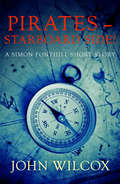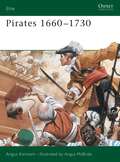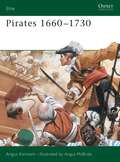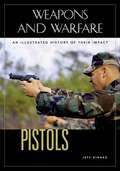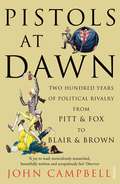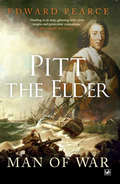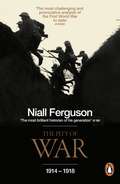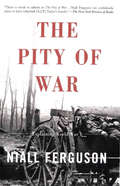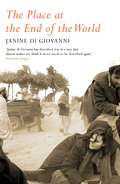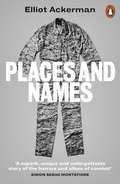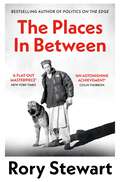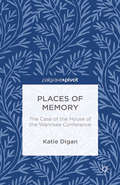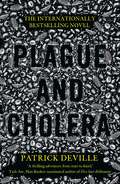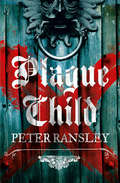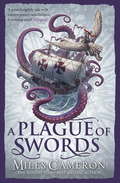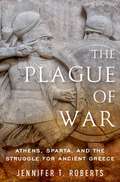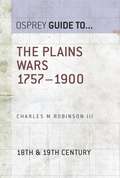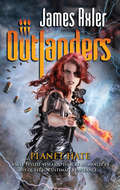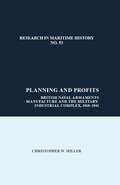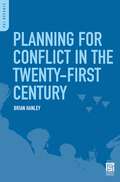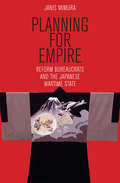- Table View
- List View
Pirates – Starboard Side!: A Simon Fonthill Short Story (Simon Fonthill #0)
by John WilcoxSimon Fonthill, his wife Alice and trusty ‘352’ Jenkins are bound from the Chinese port of Tientsin for Durban, South Africa at the urgent request of Kitchener. The rusty tub that is to take them across the sea does not inspire confidence and, more worryingly, neither does the captain. When matters come to a head, all three must pull together to ensure that their plans and lives aren’t wrecked.
Pirates 1660–1730 (Elite)
by Angus Konstam Angus McBrideThis book gives an accurate picture of the pirates who sailed in the waters of the Caribbean and off the American coastline during the 'golden age' of piracy between 1660 and 1730. It traces the origins of piratical activity in the 16th century and examines the Boucaneer (Buccaneer) culture in Jamaica and Hispaniola. It details what drove individuals to a life of piracy, how they dressed, their weaponry, the ships they used and the codes by which they operated. Whether viewed as villains or victims the Pirates were a major threat to shipping and commerce in the western Atlantic for more than 70 years. Elite 67, 69 and 74 are also available in a single volume special edition as 'Pirates'.
Pirates 1660–1730 (Elite #67)
by Angus Konstam Angus McBrideThis book gives an accurate picture of the pirates who sailed in the waters of the Caribbean and off the American coastline during the 'golden age' of piracy between 1660 and 1730. It traces the origins of piratical activity in the 16th century and examines the Boucaneer (Buccaneer) culture in Jamaica and Hispaniola. It details what drove individuals to a life of piracy, how they dressed, their weaponry, the ships they used and the codes by which they operated. Whether viewed as villains or victims the Pirates were a major threat to shipping and commerce in the western Atlantic for more than 70 years. Elite 67, 69 and 74 are also available in a single volume special edition as 'Pirates'.
Pistols: An Illustrated History of Their Impact (Weapons and Warfare)
by Jeff KinardThe development of the pistol helped bring the age of the armored knight to an end, provided the elite with a status symbol of dangerous glamour, and inspired both artisans and industrialists to reach new heights of invention.Pistols follows the evolution of personal sidearms in Europe, the United States, and Asia from medieval-era "hand cannons" with their clunky ignition systems, to the revolutionary Colt revolvers of the 19th century, to the modern semiautomatic weapons of today.Full of fascinating insights and details, this work shows how pistols brought about the decline of knights in armor, and ultimately replaced the sword on the battlefield. The book also explores the pistol's astonishing "democratization" as it moved from being a luxury item of the nobility, to standard issue for soldiers, to a mass-produced commodity and source of intensive corporate competition. Along the way, readers meet the many colorful characters (often eccentric geniuses) who devoted themselves to pistol development.
Pistols at Dawn: Two Hundred Years of Political Rivalry from Pitt and Fox to Blair and Brown
by John CampbellBenjamin Disraeli and William Gladstone. Edward Heath and Margaret Thatcher. Gordon Brown and Tony Blair. Personal rivalry is the very stuff of politics. The causes and controversies, the parties and technology may have changed over time but political conflict is still dramatised by the competition of ambitious individuals for the highest offices. Over the past two hundred years the size of the electorate has grown enormously and the means of reaching it transformed out of all recognition but human nature itself hasn't changed. In his thought-provoking book John Campbell considers eight pairs of rivals and shows how their antagonism, which often evolved into outright loathing, has determined the course of political conflict. In each of his cases studies - Fox and Pitt, Castlereagh and Canning, Gladstone and Disraeli, Asquith and Lloyd George, Bevan and Gaitskell, Macmillan and Butler, Heath and Thatcher, Brown and Blair - he combines a vivid narrative with an authoritative assessment of the historical legacy that reveals how ideology is inextricably entwined with personality.
Pit Bank Wench
by Meg HutchinsonEmma Price has eyes like a summer sky and is as kind and generous as she is beautiful. She is in love with Paul Felton and he with her, but their love seems sure to fail as Emma's father works in the coal mine that Paul will inherit when he comes of age. They are too in love to realise that their different classes mean they can never have a future. Paul's brother and guardian Carver Felton is ambitious and revels in cruelty. He razes the village of Plovers Croft, pays subsistence wages to his workers and ruthlessly exploits the greed of his peers and his brother's good nature. And one day, Carver decides to get rid of Emma for good by taking the one thing of value she has – her good reputation. Left with nothing, Emma looks destined for the workhouse, but she has vowed to exact her own revenge on Carver. Who will triumph – the evil Carver, or the humble pit bank wench...
Pitt the Elder: Man of War
by Edward PearceThis remarkable book opens at the dawn of the British Empire - with the great sea battle at Quiberon Bay where French ships, intended for the 1759 invasion of Britain, are chased, caught and defeated by a fleet commanded by Admiral Sir Edward Hawke. In this momentous victory Britain effectively settled the outcome of the Seven Years' War and established itself as the world's dominant imperial power.At the heart of the conflict with France was William Pitt, the first Earl of Chatham and Britain's future Prime Minister. Weaving together military history and political biography Edward Pearce provides a portrait of the man 'with an eye like a diamond' - a man who had close ties with the slave trade and who preached war and British supremacy on a world stage. Alongside detailed descriptions of battles in Europe and North America we follow Pitt's career as a politician - one that was closely intertwined with General James Wolfe at Quebec; American independence; the slow mind of George III and the quick one of the rake and outsider John Wilkes.Edward Pearce scrutinises the real man at the heart of the historical events and mystique surrounding the legacy of Pitt the Elder, to present a rounded and masterful portrait of arguably the most powerful minister ever to guide Britain's foreign policy and of an age which marked a new epoch in history, when the balance of power in Europe and the world was set for almost two centuries.
The Pity of War: Explaining World War I
by Niall FergusonThe controversial revisionist history of World War I that made Niall Ferguson's name The First World War killed around eight million men and bled Europe dry. More than any other event, it made the twentieth century. In this boldly conceived book and provocative, aimed to appeal not only to students but also to the general reader, Niall Ferguson explodes many of the myths surrounding the war. Niall Ferguson is Herzog Professor of Financial History at the Stern School of Business, New York University, Visiting Professor of History, Oxford University and Senior Research Fellow, Jesus College, Oxford. His other books for Penguin include Empire, The Cash Nexus, Colossus, The War of the World, Virtual History, High Financier and Civilization.
The Pity of War: Explaining World War I
by Niall FergusonFrom a bestselling historian, a daringly revisionist history of World War IThe Pity of War makes a simple and provocative argument: the human atrocity known as the Great War was entirely England's fault. According to Niall Ferguson, England entered into war based on naive assumptions of German aims, thereby transforming a Continental conflict into a world war, which it then badly mishandled, necessitating American involvement. The war was not inevitable, Ferguson argues, but rather was the result of the mistaken decisions of individuals who would later claim to have been in the grip of huge impersonal forces.That the war was wicked, horrific, and inhuman is memorialized in part by the poetry of men like Wilfred Owen and Siegfried Sassoon, but also by cold statistics. Indeed, more British soldiers were killed in the first day of the Battle of the Somme than Americans in the Vietnam War. And yet, as Ferguson writes, while the war itself was a disastrous folly, the great majority of men who fought it did so with little reluctance and with some enthusiasm. For anyone wanting to understand why wars are fought, why men are willing to fight them and why the world is as it is today, there is no sharper or more stimulating guide than Niall Ferguson's The Pity of War.
The Place At The End Of The World: Stories from the Frontline
by Janine Di GiovanniAt the start of her career Janine di Giovanni was advised, 'Write about the small voices, the people who can't write about themselves.'For over fifteen years, she has been doing exactly that. From a near-abandoned hospital in Chechnya to bombed-out Tora Bora in Afghanistan, from Saddam Hussein's derelict palace in Baghdad to the inner-city barrios of Kingston, Jamaica, di Giovanni has covered almost every embattled place in the world and the people caught in its midst. Like Myriem, who lives on the West Bank, but can no longer use her farm because it falls on the Israeli side of the security fence; and Sia, one of the child soldiers of Sierra Leone, who talks blithely of shedding her violent past; and Abdul, who was imprisoned by the Taliban at seventeen for not wearing a beard.The pieces collected here begin with Algeria in 1998 and end with Iraq in 2005. They are vivid, raw and impassioned - and they make war terrifyingly real.
Places and Names: On War, Revolution and Returning
by Elliot Ackerman'A superb, unique, and unforgettable story of war and death, fear and cruelty, above all the horrors and allure of combat' Simon Sebag Montefiore'One of the most profound books I have ever read about the real nature of war and the abstract allure of the ideas and the bloodshed that fuels it' Jon Lee Anderson, author of The Fall of BaghdadAn astonishing account of the nature of war from acclaimed novelist and decorated former US marine Elliot AckermanIn a refugee camp in southern Turkey, Elliot Ackerman sits across the table from Abu Hassar, who fought for Al Qaeda in Iraq and has murky connections to the Islamic State. At first, Ackerman pretends to have been a journalist during the Iraq War, but after he establishes a rapport with Abu Hassar, he reveals that in fact he was a Marine. The two men then compare their fighting experiences in the Middle East, discovering they had shadowed each other for some time: a realisation that brings them to a strange kind of intimacy.Elliot Ackerman's extraordinary memoir explores the events that led him to come to this refugee camp and what, unable to forget his time in battle, he hoped to find there. Moving between his recent time on the ground as a journalist in Syria and his Marine deployments in Iraq and Afghanistan, he creates a work of astonishing atmospheric pressure, one which blends the American experience with the perspectives and stories of the Arab world, and draws a line between them.At once an intensely personal book about the terrible lure of combat and a brilliant meditation on the meaning of the past two decades of strife for the region and the world, Places and Names bids to take its place among our greatest books about modern war.
The Places In Between: A vivid account of a death-defying walk across war-torn Afghanistan
by Rory StewartWinner of the RSL Ondaatje PrizeShortlisted for the Guardian First Book Award‘A striding, glorious book . . . A flat-out masterpiece’ The New York Times Book ReviewCaught between hostile nations, warring factions and competing ideologies, Afghanistan was in turmoil following the US invasion. Travelling entirely on foot and following the inaccessible mountainous route once taken by the Mughal emperor Babur the Great, Rory Stewart was nearly defeated by the extreme, hostile conditions.Only with the help of an unexpected companion, and the generosity of the people he met on the way, did he survive to report back on his journey with unique insight on a region closed to the world by twenty-four years of war.‘This evocative book feels like a long-lost relic of the great age of exploration’ The Guardian
Places of Memory: The Case of the House of the Wannsee Conference
by K. DiganPlaces of Memory examines the post-war history of the site where the 1942 Wannsee Conference was held. The author analyses the different uses of the house to investigate how a site turns into a site of memory.
Plague and Cholera
by Patrick DevilleParis, May 1940. Nazi troops storm the city and at Le Bourget airport, on the last flight out, sits Dr Alexandre Yersin, his gaze politely turned away from his fellow passengers with their jewels sewn into their luggage. He is too old for the combat ahead, and besides he has already saved millions of lives. When he was the brilliant young protégé of Louis Pasteur, he focused his exceptional mind on a great medical conundrum: in 1894, on a Hong Kong hospital forecourt, he identified and vaccinated against bubonic plague, later named in his honour Yersinia pestis.Swiss by birth and trained in Germany and France, Yersin is the son of empiricism and endeavour; but he has a romantic hunger for adventure, fuelled by tales of Livingstone and Conrad, and sets sail for Asia. A true traveller of the century, he wishes to comprehend the universe. Medicine, agriculture, the engine of the new automobile, all must be opened up, examined and improved. Ceaselessly curious and courageous, Yersin stands, a lone genius,against a backdrop of world wars, pandemics, colonialism, progress and decadence. He is brought to vivid, thrilling life in Patrick Deville's captivating novel, which was a bestseller and shortlisted for every major literary award in France.
Plague Child
by Peter RansleyThe first instalment of a captivating trilogy set against the backdrop of the English Civil War.
A Plague of Swords
by Miles CameronONE ENEMY HAS FALLENA GREATER ONE REMAINSNOW IT'S WAR . . .The Red Knight withstood the full might of his enemy, and won the day. In a victory which will be remembered through the ages, he brought disparate factions together and turned them into allies against a more powerful foe than they had ever seen.Now, he will need his allies more than ever.Because behind one adversary hid another - one with allies of their own - whose goal was never to destroy Alba, but to distract the Kingdom while achieving his true aim. And whatever it is, it's probably not in the Red Knight's interest.With one army defeated, now the Red Knight must fight again . . . and for every one of his allies there is a corresponding enemy. Spread out in different lands, and on sea, it will all come down to one last gamble. And to whether or not the Red Knight has guessed their foe's true intentions.With each throw of the dice, everything could be lost . . .
The Plague of War: Athens, Sparta, and the Struggle for Ancient Greece (Ancient Warfare and Civilization)
by Jennifer T. RobertsIn 431 BC, the long simmering rivalry between the city-states of Athens and Sparta erupted into open warfare, and for more than a generation the two were locked in a life-and-death struggle. The war embroiled the entire Greek world, provoking years of butchery previously unparalleled in ancient Greece. Whole cities were exterminated, their men killed, their women and children enslaved. While the war is commonly believed to have ended with the capture of the Athenian navy in 405 and the subsequent starvation of Athens, fighting in Greece would continue for several decades. Sparta's authority was challenged in the so-called Corinthian War (395-387) when Persian gold helped unite Athens with Sparta's former allies. The war did not truly end until, in 371, Thebes' crack infantry resoundingly defeated Sparta at Leuctra, forever shattering the myth of Spartan military supremacy. Jennifer Roberts' rich narrative of this famous conflict is the first general history to tell the whole story, from the war's origins down to Sparta's defeat at Leuctra. In her masterful account, this long and bloody war affected every area of life in Athens, exacerbated divisions between rich and poor in Sparta, and sparked civil strife throughout the Greek world. Yet despite the biting sorrows the fighting occasioned, it remains a gripping saga of plots and counter-plots, murders and lies, thrilling sea chases and desperate overland marches, missed opportunities and last-minute reprieves, and, as the war's first historian Thucydides had hoped, lessons for a less bellicose future. In addition, Roberts considers the impact of the war on Greece's cultural life, including the great masterworks of tragedy and comedy performed at this time and, most infamously, the trial and execution of Socrates. A fast-paced narrative of one of antiquity's most famous clashes, The Plague of War is a must-read for history enthusiasts of all ages.
The Plague of War: Athens, Sparta, and the Struggle for Ancient Greece (Ancient Warfare and Civilization)
by Jennifer T. RobertsIn 431 BC, the long simmering rivalry between the city-states of Athens and Sparta erupted into open warfare, and for more than a generation the two were locked in a life-and-death struggle. The war embroiled the entire Greek world, provoking years of butchery previously unparalleled in ancient Greece. Whole cities were exterminated, their men killed, their women and children enslaved. While the war is commonly believed to have ended with the capture of the Athenian navy in 405 and the subsequent starvation of Athens, fighting in Greece would continue for several decades. Sparta's authority was challenged in the so-called Corinthian War (395-387) when Persian gold helped unite Athens with Sparta's former allies. The war did not truly end until, in 371, Thebes' crack infantry resoundingly defeated Sparta at Leuctra, forever shattering the myth of Spartan military supremacy. Jennifer Roberts' rich narrative of this famous conflict is the first general history to tell the whole story, from the war's origins down to Sparta's defeat at Leuctra. In her masterful account, this long and bloody war affected every area of life in Athens, exacerbated divisions between rich and poor in Sparta, and sparked civil strife throughout the Greek world. Yet despite the biting sorrows the fighting occasioned, it remains a gripping saga of plots and counter-plots, murders and lies, thrilling sea chases and desperate overland marches, missed opportunities and last-minute reprieves, and, as the war's first historian Thucydides had hoped, lessons for a less bellicose future. In addition, Roberts considers the impact of the war on Greece's cultural life, including the great masterworks of tragedy and comedy performed at this time and, most infamously, the trial and execution of Socrates. A fast-paced narrative of one of antiquity's most famous clashes, The Plague of War is a must-read for history enthusiasts of all ages.
The Plains Wars 1757–1900 (Guide to...)
by Charles M. Robinson IIIThe Great Plains cover the central two-thirds of the United States, and during the nineteenth century were home to some of the largest and most powerful Indian tribes on the continent. The conflict between those tribes and the newcomers from the Old World lasted about one hundred and fifty years, and required the resources of five nations - Spain, Mexico, the Republic of Texas, the Confederate States of America and the United States - before fighting ended in the mid 1890s. This masterly exposition explains the background, causes and long term effects of these bitter wars, whose legacy can still be felt today.
Plane Spotter’s Guide (General Aviation Ser.)
by Tony HolmesAviation has revolutionised warfare over the last 100 years, and this new pocket guide gives the reader the essential details of 70 iconic aircraft, including the Sopwith Camel, the Spitfire, the Messerschmitt Bf 109, the P-51 Mustang and the F-4 Phantom. Drawing on Osprey's comprehensive aviation archive, the Plane Spotter's Guide uses detailed profile artwork to illustrate and aid recognition, as well as specification boxes to provide all the technical details.
Plane Spotter’s Guide
by Tony HolmesAviation has revolutionised warfare over the last 100 years, and this new pocket guide gives the reader the essential details of 70 iconic aircraft, including the Sopwith Camel, the Spitfire, the Messerschmitt Bf 109, the P-51 Mustang and the F-4 Phantom. Drawing on Osprey's comprehensive aviation archive, the Plane Spotter's Guide uses detailed profile artwork to illustrate and aid recognition, as well as specification boxes to provide all the technical details.
Planet Hate
by James AxlerCenturies beyond the aftermath of a shattered earth, the aeons-old manipulation of humanity has brought forth a new chrysalis of star-born domination. His name is Ullikummis, exiled scion of an embattled but brilliant and calculating inhuman race.
Planning and Profits: British Naval Armaments Manufacture and the Military Industrial Complex, 1918-1941 (Research in Maritime History #53)
by Christopher MillerIn a time of great need for Britain, a small coterie of influential businessmen gained access to secret information on industrial mobilisation as advisers to the Principal Supply Officers Committee. They provided the state with priceless advice, but, as “insiders” utilised their access to information to build a business empire at a fraction of the normal costs. Outsiders, in contrast, lacked influence and were forced together into a defensive “ring” – or cartel – which effectively fixed prices for British warships. By the 1930s, the cartel grew into one of the most sophisticated profiteering groups of its day. This book examines the relationship between the private naval armaments industry, businessmen, and the British government defence planners between the wars. It reassesses the concept of the military-industrial complex through the impact of disarmament upon private industry, the role of leading industrialists in supply and procurement policy, and the successes and failings of government organisation. It blends together political, naval, and business history in new ways, and, by situating the business activities of industrialists alongside their work as government advisors, sheds new light on the operation of the British state. This is the story of how these men profited while effectively saving the National Government from itself.
Planning for Conflict in the Twenty-First Century (PSI Reports)
by Brian HanleyThis book aims to serve the military profession, and so the national interest, by helping to generate intelligent reform of how the armed forces train, educate, and promote officers who shape our military strategy and write our war plans. Readers will discover the professional and intellectual improvement that wide reading in the masters of historical narrative offers to them. The first chapter, Lessons Not Learned, surveys our strategic documents-and their recent applications-and offers criticism and recommendations. The second chapter, Transformation Ballyhoo, evaluates our current efforts at military transformation and offers an alternative approach to rehabilitating our armed forces. The third chapter, The Brain of An Army, offers ideas on building a first-rate Joint War College. Chapters four through six focus on military campaigns: France 1940; Stalingrad; North Africa, 1940-43. The theme is that moral and intellectual qualities determine the fate of armies in war, and that material and bureaucratic machinery are not nearly so vital as we seem to think nowadays.
Planning for Empire: Reform Bureaucrats and the Japanese Wartime State (Studies of the Weatherhead East Asian Institute, Columbia University)
by Janis MimuraJapan’s invasion of Manchuria in September of 1931 initiated a new phase of brutal occupation and warfare in Asia and the Pacific. It forwarded the project of remaking the Japanese state along technocratic and fascistic lines and creating a self-sufficient Asian bloc centered on Japan and its puppet state of Manchukuo. In Planning for Empire, Janis Mimura traces the origins and evolution of this new order and the ideas and policies of its chief architects, the reform bureaucrats. The reform bureaucrats pursued a radical, authoritarian vision of modern Japan in which public and private spheres were fused, ownership and control of capital were separated, and society was ruled by technocrats.Mimura shifts our attention away from reactionary young officers to state planners—reform bureaucrats, total war officers, new zaibatsu leaders, economists, political scientists, engineers, and labor party leaders. She shows how empire building and war mobilization raised the stature and influence of these middle-class professionals by calling forth new government planning agencies, research bureaus, and think tanks to draft Five Year industrial plans, rationalize industry, mobilize the masses, streamline the bureaucracy, and manage big business. Deftly examining the political battles and compromises of Japanese technocrats in their bid for political power and Asian hegemony, Planning for Empire offers a new perspective on Japanese fascism by revealing its modern roots in the close interaction of technology and right-wing ideology.
